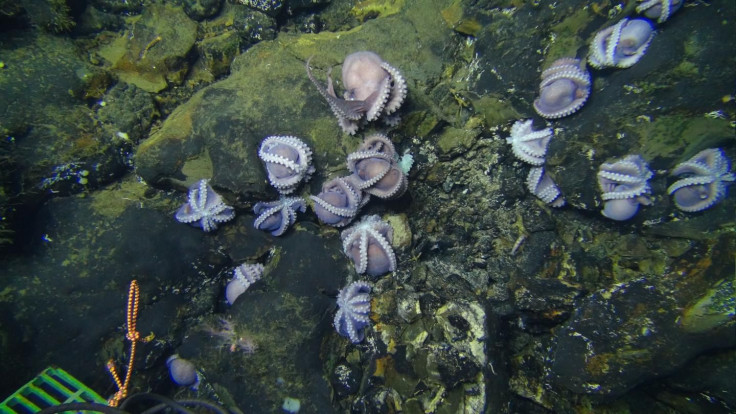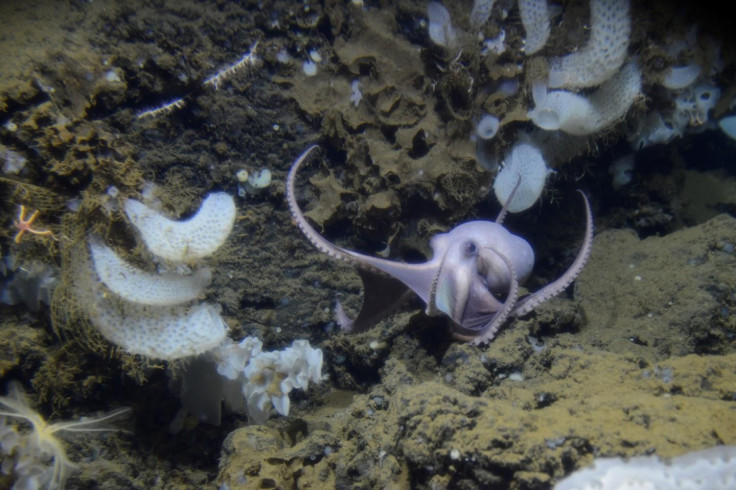Doomed Pink Octopus: Dozens Of Deep-Sea Creatures Found Guarding Their Eggs
A group of geochemists has announced the discovery of dozens of weird deep-sea octopuses — pink, dinner-plate-sized creatures that had massive eyes and were guarding their eggs in an absolutely inhospitable place.
Found thousands of feet deep within the Pacific, a few hundred miles off the coast of Costa Rica, the so-called octopus moms belong to a new species of genus Muusoctopus. They were spotted by scientists during two deep-sea expeditions led in 2013-14.
The group was exploring the Dorado Outcrop, a rocky patch made of cooled and hardened lava from an undersea volcano, and hoping to get a sample of the warm fluid coming from the cracks in those rocks. However, they were totally surprised after stumbling upon hundreds of octopuses gathered around the cracks.

Though Muusoctopus are known to be loners, these creatures covered every rock in the area. Many of them appeared females clutching broods of eggs attached to the cracks from which the warm fluid was spewing out.
This seemed strange because deep-sea octopuses aren’t the ones for warm environments. They are found in regions with cold, invariable temperatures and avoid moving toward the hot water as it jump-starts their metabolism, but fails to provide sufficient oxygen to cope with it.
"When I first saw the photos, I was like 'No, they shouldn't be there! Not that deep and not that many of them," Janet Voight, one of the co-authors of the study detailing the discovery, said in a statement.
The team noted the creatures were alive somehow, but their condition was not that great. The mother octopuses showed signs of severe stress, while eggs did not display the signature of a developing embryo.
The sheer scale of the doomed octopuses led researchers to posit that somewhere in the same region a better, healthier habitat for the creatures might be existing. Essentially, they think siblings from the same group could be thriving in rock crevices where the water is cool and rich in oxygen.
That said, it is still not known why a group of octopuses, as big as this, decided to remain in such inhospitable conditions, particularly at the time of egg-brooding. Many think this could be a result of population explosion, a situation which might have led this group to a warmer region.
"Octopus females only produce one clutch of eggs in their lives. In order for this huge population to be sustained, there must be even more octopuses to replace the dying mothers and eggs that we can see," says Voight. “Odds are it (the outcrop) has hollow areas where other females nurture their eggs to hatching.”
The researcher also notes that scientists have observed the hidden population in the past, with hands emerging once in a while.
The study, titled “Clusters of deep-sea egg-brooding octopods associated with warm fluid discharge: An ill-fated fragment of a larger, discrete population?” was published April 17 in the journal ScienceDirect.

© Copyright IBTimes 2024. All rights reserved.





















